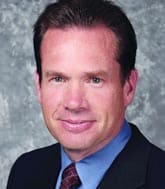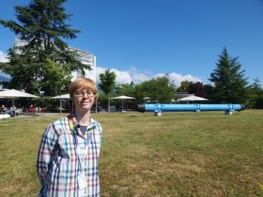Bruce McWilliams is chairman of the board of directors at Tessera, a semiconductor packaging, imaging and optics company based in San Jose, California, US. Between 1999 and 2008 he also served as Tessera’s president and chief executive officer

Why did you choose to study physics?
When I was about 11, I got some electronics kits; I made radios and circuits, and read about how the transistor works. I wanted to understand why things worked, and I remember being so fascinated by the TV set that I took it apart. My mother didn’t like that! As a teenager, I had a very good high-school physics teacher who gave me lots of advanced books to read, including the Feynman Lectures. Back then, my favourite part was being able to estimate something or predict it.
How did you become interested in electronics?
During the summers when I was studying physics at Carnegie Mellon University, I programmed microprocessors with a small start-up company. These were the first microprocessors, back in 1976 or thereabouts, and there were no programmes written for them, so we could sell the software in hobby magazines. We actually made a lot of money, about $40,000, because everybody needed software. But my PhD (also at Carnegie Mellon) was actually on gauge theories of electroweak interactions and how to look for the Higgs particle. Gauge theories were the hot thing in the 1970s, and I was interested in fundamental theories, so that is what I studied.
What made you decide to switch from research to industry?
While I was doing my PhD, I sometimes picked up 20-year-old journals, and I realized that 99% of the stuff in them was already irrelevant. Another factor was that I finished my PhD at the depth of the great recession of the 1970s, when nobody was being hired. So instead, I went to work at the centre for computer engineering at the Mellon Institute on a salary of $26,000 a year, which seemed like an enormous amount of money to me at the time. Later, I worked for someone who did not like the fact that his firm’s competitors were reverse-engineering his products so they could copy them, and he wanted to print his entire product on a custom microchip to prevent them from taking it apart. So I got on a plane for Silicon Valley and started finding out how hard it was to put sensors on custom chips. One thing led to another, and I have been in California ever since.
How has your physics training affected your approach to business?
Business and physics are very similar in that if you can precisely define the problem, you have done 80% of the work in solving it. I have found that as a chief executive, you basically show up every day and find a new problem waiting for you. It might be an employee threatening to quit or a customer who is upset or a problem in manufacturing, but if you love solving problems, then you will like being a chief executive. Also, physics is the perfect training for working in technology, because the field moves very quickly; if you are grounded in the fundamentals, you can always understand what is going on. What physics does not, however, give you is people skills, so you have to develop those. Business in general is not best learned in the college classroom but by doing it — by being in the foxhole with bullets going over your head.
What do you think are the biggest challenges facing microelectronics?
Many of the products have become commodities, so the profit margins are not large. It is difficult to keep innovation going; with semiconductors, the capital investments required to move up to the next level are enormous, so that is a huge challenge for the industry. Fundamentally, the problem is that we are where cars were in the 1960s and 1970s. We still have lots of growth, but it is not an easy business; you do not really know where the consumer is going to go. Every decade has a theme; in the 1980s it was personal computers, in the 1990s it was networks and now it is the mobile phone. These things are what drive new innovation.
Do you still find the time to keep up with any physics?
I try to spend maybe an hour a day reading or thinking about it, and to facilitate that I endowed a centre for cosmology at Carnegie Mellon. I stay involved there, I talk with the physicists, go to some seminars, participate in hiring decisions — giving advice about how we are going to grow and find money for new projects.
What career advice would you give to physics students today?
Stay open and try to do as many different types of things as you can. Try to find what your passion is, because if you find your passion, you will do well. Also, think ahead — what do you want to be doing 10 years from now? Some people are suited to a research environment, some less so.



